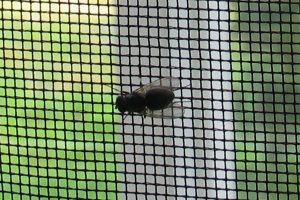75 Membranes are Selectively Permeable
Plasma membranes act not only as a barrier, but also as a gatekeeper. It must allow needed substances to enter and cell products to leave the cell, while preventing entrance of harmful material and exit of essential material. In other words, plasma membranes are selectively permeable—they allow some substances through but not others (Figure 1). If the membrane were to lose this selectivity, the cell would no longer be able to maintain homeostasis, or to sustain itself, and it would be destroyed. Some cells require larger amounts of specific substances than other cells; they must have a way of obtaining these materials from the extracellular fluids.
This may happen passively, as certain materials move back and forth, or the cell may have special mechanisms that ensure transport. Most cells expend most of their energy, in the form of adenosine triphosphate (ATP), to create and maintain an uneven distribution of ions on the opposite sides of their membranes. The structure of the plasma membrane contributes to these functions.

Selective Permeability
Plasma membranes are asymmetric, meaning that despite the mirror image formed by the phospholipids, the side of the membrane facing the inside of the cell is not identical to the exterior of the membrane. Proteins that act as channels or pumps work in one direction. Carbohydrates, attached to lipids or proteins, are also found on the exterior surface of the plasma membrane.
These carbohydrate complexes help the cell bind substances in the extracellular fluid that the cell needs. This adds considerably to the selective nature of plasma membranes.
Recall that plasma membranes have hydrophilic and hydrophobic regions. This characteristic helps the movement of certain materials through the membrane and hinders the movement of others. Lipid-soluble material can easily slip through the hydrophobic lipid core of the membrane. Substances such as the fat-soluble vitamins A, D, E, and K readily pass through the plasma membranes in the digestive tract and other tissues. Fat-soluble drugs also gain easy entry into cells and are readily transported into the body’s tissues and organs. Molecules of oxygen and carbon dioxide have no charge and pass through by simple diffusion.
Polar substances, with the exception of water, present problems for the membrane. While some polar molecules connect easily with the outside of a cell, they cannot readily pass through the lipid core of the plasma membrane. Additionally, whereas small ions could easily slip through the spaces in the mosaic of the membrane, their charge prevents them from doing so. Ions such as sodium, potassium, calcium, and chloride must have a special means of penetrating plasma membranes. Simple sugars and amino acids also need help with transport across plasma membranes.
References
Unless otherwise noted, images on this page are licensed under CC-BY 4.0 by OpenStax.
Text adapted from: OpenStax, Concepts of Biology. OpenStax CNX. May 18, 2016 http://cnx.org/contents/b3c1e1d2-839c-42b0-a314-e119a8aafbdd@9.10

